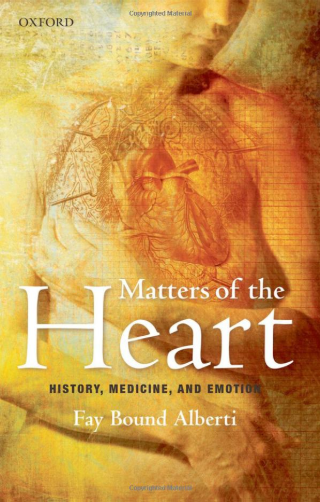Matters of the Heart: History, Medicine, and Emotion, by Fay Bound Alberti
Have other body parts ever been depicted as fulfilling the same function as the brain? For centuries since Antiquity, mind and the physical basis of personality were also located in the heart. The heart played a crucial role in Christian mysticism, and objects in the shape of the cross and other instruments of the Passion were found in holy persons’ hearts. It did not, however, play for personal identity a role equivalent to the brain’s, and it was predominantly seen as the locus and symbol of emotions (Bound Alberti 2010).

About the book
The heart is the most symbolic organ of the human body. Across cultures it is seen as the site of emotions, as well as the origin of life. We feel emotions in the heart, from the heart-stopping sensation of romantic love to the crushing sensation of despair.
And yet since the nineteenth century the heart has been redefined in medical terms as a pump, an organ responsible for the circulation of the blood. Emotions have been removed from the heart as an active site of influence and towards the brain. It is the brain that is the organ most commonly associated with emotion in the modern West.
So why, then, do the emotional meanings of the heart linger? Why do many transplantation patients believe that the heart, for instance, can transmit memories and emotions and why do we still refer to emotions as "heartfelt?"
We cannot answer these questions without reference to the history of the heart as both physical organ and emotional symbol. Matters of the Heart traces the ways emotions have been understood between the seventeenth and nineteenth centuries as both physical entities and spiritual experiences. With reference to historical interpretations of such key concepts as gender, emotion, subjectivity and the self, it also addresses the shifting relationship from heart to brain as competing centers of emotion in the West. - Amazon










































0 comments
Sign in or create a free account